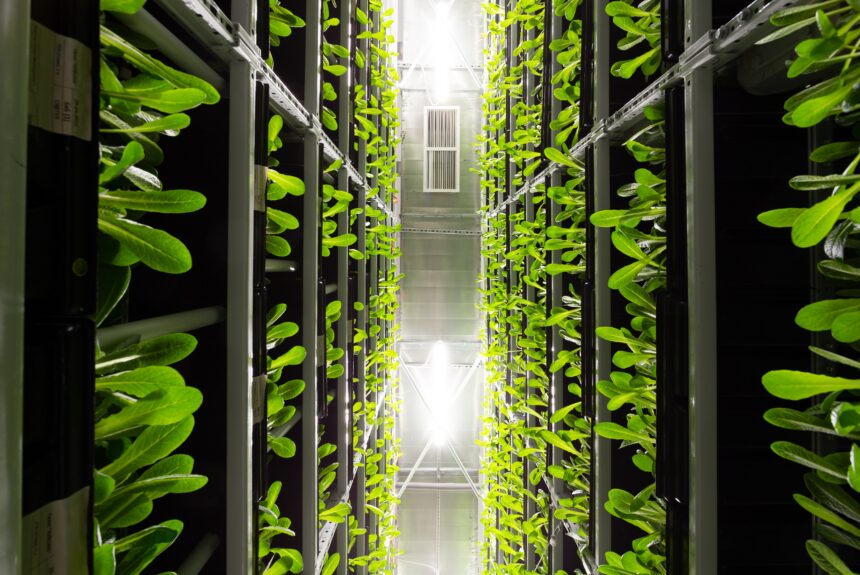The global market for vertical farming has been steadily growing in the past several years. Marketed as a sustainable alternative to traditional agriculture, vertical farms are ready to play a major role in providing healthy and affordable food to consumers. While the private sector is largely leading these developments, grocery shoppers may have one agency to thank for this agricultural explosion: NASA.
>>> READ: Five Companies that are Investing in Regenerative Agriculture
Before getting into that, it’s important to know what vertical farming is. The concept is simple – turn buildings into farms by growing crops vertically on walls or in racks, one on top of the other allowing maximum use of space. In some cases plants are grown hydroponically— a technique of growing plants using a water-based nutrient solution rather than soil–with water circulating around the building, instead of with compost.
Vertical farming can play an important role in reducing emissions from the agricultural sector while providing affordable and abundant food to consumers. Vertical farming can produce high crop yields. James Atland of the USDA Agricultural Research Service states that “for some crops 10 to 20 times the yield can be obtained per acre compared to open-field crops.’ In the US, approximately 5.45 lbs of lettuce are being produced via vertical farms per square foot, together with 1.34 million tons of strawberries.
Vertical farming also allows fresh vegetables, fruit, and greens to be grown in or near cities which reduces the need to transport produce large distances from rural farms to population centers.
Such systems do create challenges, especially with regard to the amount of water required, and the constant energy involved to power the technology and provide heating. The introduction of computerization, AI, and low-energy systems is helping to overcome those challenges, leading to greater adaption of the technology.
NASA has played a key role in the development of vertical farming techniques. Recognizing the need to provide astronauts with fresh produce during long spells in space, it created the first vertical trial farm in a former hypobaric chamber left over from testing the Mercury space capsule.
NASA’s research efforts have been instrumental in establishing the controlled environment agriculture industry and its subsequent companies. One such startup is Plenty Unlimited. Using a “nutrient film technique” that NASA pioneered, Plenty grows produce with a “soil-free hydroponic system [that] circulates a constant, minimal film of water around seedlings, containing all the necessary nutrients,” which results in more flavorful and tender produce. The company’s two-acre farm uses less than 1% of traditional water usage but has a similar yield to a 720-acre outdoor farm.
>>>READ: Eden Green is Bringing Affordable, Healthy Food to Consumers
While Plenty is focused on food for space travel, Green Sense Farm Holdings––another company that is putting NASA’s research to use––is developing solutions for the Earth’s food supply. The company uses software to optimize conditions in climate-controlled vertical farms in order to increase plant success. It also collects data on plant growth.
The company is currently testing and measuring the ratio of blue to red light and the intensity of LED bulbs that are used for indoor farms. Green Sense hopes that this research will help reduce energy consumption for vertical farming, an issue that many opponents of vertical farming often bring up.
Experts have signaled that vertical farming is ready for rapid growth. Globally, the vertical farming market is forecasted to reach $19.86 billion in 2026. Today, more than 2,300 farms are using hydroponics for crop cultivation within the U.S., which accounts for 35% of the vertical farming sector.
These are just a few of the many startups that are leveraging NASA’s research to improve vertical farming systems and bring affordable and healthy food to consumers who are traveling the Milky Way or who are stuck on Earth. In the future, expect the private sector to continue developing sustainable methods to increase food production around the world.
Angela Youngman is a long established freelance journalist and author based in the UK specialising in business, sustainability, travel, tourism, leisure, food & drink.
The views and opinions expressed are those of the author’s and do not necessarily reflect the official policy or position of C3.
